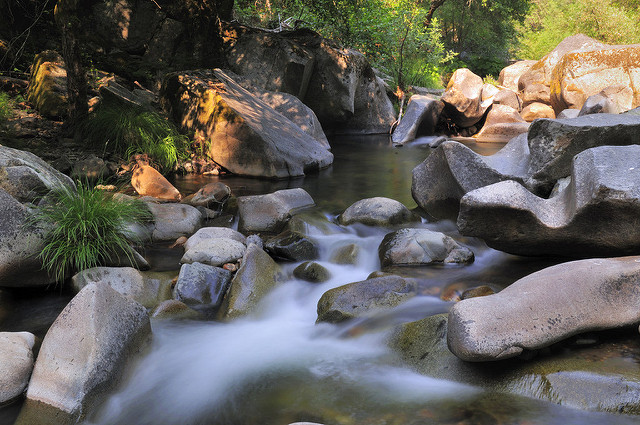 By Heinrich Albert
By Heinrich Albert
The Mokelumne River is one of the many beautiful rivers draining the west slope of the Sierra, known for its high water quality. The river, which begins high in the Sierra in Alpine County and flows west to the Delta, provides 90 percent of the water used by East Bay Municipal Utility District customers. Previous efforts to permanently protect sections of the upper river with California Wild and Scenic designation failed to pass the state legislature, but we now have another chance. Permanently protecting the Mokelumne with Wild and Scenic designation would protect not only water quality, but also the scenic and recreational values of this special river.
Recently the State Natural Resources Agency released the draft Mokelumne River Wild and Scenic Study Report, which recommends adding 37 miles of the Mokelumne above EBMUD’s Pardee Reservoir to the California Wild and Scenic River System. The report was mandated by the 2015 passage of Assembly Bill 142, which also established Wild and Scenic-comparable interim protections for the affected river reaches. These interim protections remain active until 2021.
AB 142 was supported by local governments, water agencies including EBMUD, businesses and business groups, tribes, and outdoor-oriented nonprofit organizations, including the Sierra Club. It required the Natural Resources Agency to conduct a study to determine the suitability of sections of the upper Mokelumne River and North Fork Mokelumne for inclusion in the state system. The study segments included in the bill start below Salt Springs Dam and end at Pardee Reservoir’s flood surcharge pool downstream of Highway 49 near Jackson, with gaps around PG&E hydroelectric facilities on the river.
The study’s findings and conclusions include the following:
The major effect of Mokelumne Wild and Scenic designation would be to ban onstream dams and reservoirs in the affected reaches of the river, as well as new diversions of water for use outside Amador and Calaveras counties.
After designation, current uses of the Mokelumne River would continue. Wild and Scenic designation will not affect existing water rights, hydropower generation, hunting and fishing, land use, grazing, or agriculture. Designation would have no effect on EBMUD’s water storage and diversions.
Local water agencies could develop water projects upstream of the designated reaches provided the projects do not adversely affect “the free-flowing condition, natural character, and extraordinary scenic and recreational values of the Mokelumne’s designated segments.” The study also makes clear that state Wild and Scenic designation “does not seem to have adversely affected [water] diversion applications on wild and scenic rivers,” based on the 2017 findings of the California Research Bureau and concludes that “[o]ther environmental regulations such as CEQA would have more impact on a proposed project than the California Wild and Scenic Rivers Act (CRB 2018).”
The study lauded the diverse recreational opportunities along and near the Mokelumne, which include family camping, rock climbing, water play, fishing, swimming, gold panning, wildflower viewing, and whitewater boating. It states, “This array of both relaxing and challenging recreational opportunities and values is unique among western Sierra Nevada rivers and already designated State Wild and Scenic Rivers.”
While local, statewide and national conservation, fish, and recreation organizations including the Sierra Club have applauded the report, we do have some concerns about the draft Mokelumne study. We believe it should recognize the extraordinary wildlife value of the Mokelumne, which is home to numerous special status species and potential restoration spawning habitat for fall-run Chinook salmon.
For this process to move forward, CNRA needs to adopt this report and forward it to the legislature. From there, we need the legislature to act and make the proposed sections of the Mokelumne part of the California Wild and Scenic River System.
The draft Mokelumne study is now available for public review and comment online here.
Heinrich Albert is co-chair of the Bay Chapter Water Committee. For more information, contact Steve Evans at 916-708-3155, sevans@friendsoftheriver.com, or Katherine Evatt at 209-223-3508, Katherine@mokeriver.com.
Photo: Mokelumne River courtesy Yathin via Flickr Creative Commons.